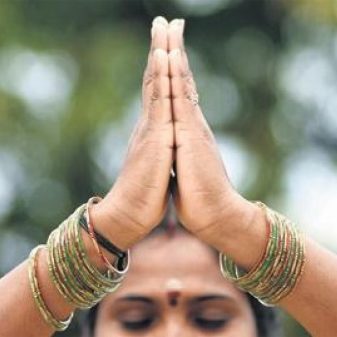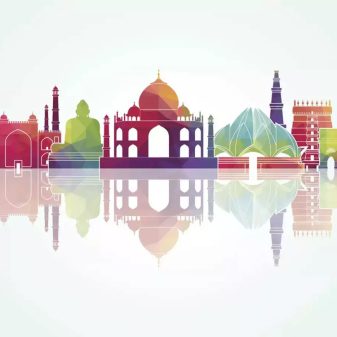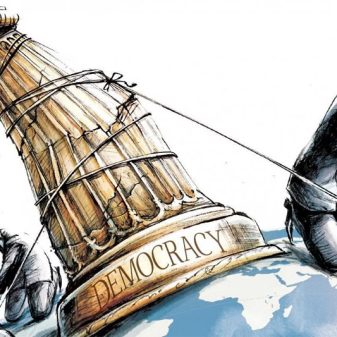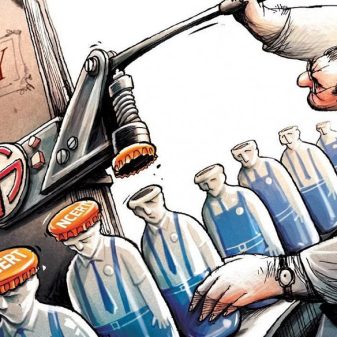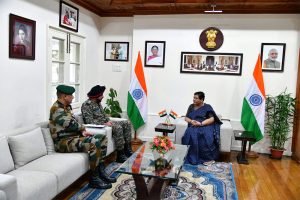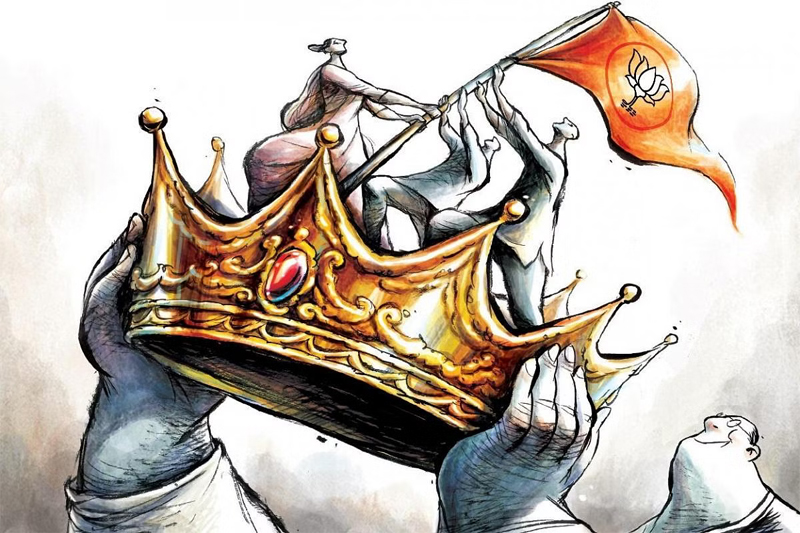
The worker is no longer another humble element which appears and recedes depending on the circumstances.
Radhika Ramaseshan
The “karyakarta” (worker) is a cogwheel in an intricate machine assembly interlacing the various components in the BJP’s humongous order—from the elite to the middle and subordinate levels and importantly, the RSS. The BJP and its “karyakartas” are so interdependent that it’s difficult to think of one without the other. The “karyakarta” can only be ignored at the leadership’s peril.
Atal Bihari Vajpayee often made short shrift of his party workers—this was a factor that was overlooked, explaining the NDA’s “shock” defeat in the 2004 Lok Sabha election. L K Advani extolled them (bar a schmaltzy moment in Karachi in 2005 when he went overboard praising Pakistan’s founder Mohammed Ali Jinnah and paid a price with his political career), as did Pramod Mahajan and K N Govindacharya, who were key Advani team members. Among other past presidents, for Kushabhau Thakre, a quintessential RSS “pracharak”, the “karyakarta” was the zenith of his functioning but he presided over the BJP during the Vajpayee regime and had little leeway in leveraging the worker’s centrality. Nitin Gadkari was brought in during the bleakest spell the BJP experienced after it was voted out and, on his part, did little to inspire and galvanise the workforce.
Under Prime Minister Narendra Modi, the worker regained his primacy because Modi rules without having to look over his shoulder. The division of labour that characterised Vajpayee’s spells in office undermined his ranking in the organisation that was seen as Advani’s domain. No such partitioning of responsibilities exists now. Modi might have left the minutiae of “karyakarta” management, i.e., the HR department, and electioneering to Home Minister Amit Shah, but never allows his gaze to wander away from both areas. The worker is no longer another humble element in the BJP’s architecture which appears and recedes depending on the circumstances. He or she is an ubiquitous entity who even calls the shots when required.
Those with a distant view of the BJP wonder why Modi speaks to the “karyakarta” at every conceivable opportunity, be it a milestone event, an election warm-up or a victory celebration, apart from the “Mann ki Baat” addresses. But the monthly monologue is intended as much for the “aam janta” as for the party workers.
Modi’s latest speech to party workers was delivered April 6 on the party’s 44th Foundation Day against a less-than-optimistic backdrop. The Opposition largely regrouped to demand a JPC probe into the Hindenburg Report on Gautam Adani’s stock market manipulation; the second leg of Parliament’s budget session was virtually paralysed (despite which the treasury benches pushed through the Finance and Appropriation bills).
Modi’s was a chalk talk laced with the by-now familiar tropes: the Opposition’s “badshahi” (imperial) mindset which, he alleged, scaled such a level of desperation that “They have openly started saying, Modi your grave will be dug”, segueing into an attack on him with an “insult” to the poor, the Dalits, Adivasis and the backward castes, “protecting the lotus” (the BJP’s election symbol), and reinforcing the commitment to liberate India from corruption, nepotism, and law and order challenges.
On March 2, after the BJP and its allies won the polls in Tripura, Meghalaya and Nagaland, Modi identified the triumph with himself. His detractors wanted him to “die” while people wished the opposite, he proclaimed. “Do not go Modi” was the chorus. However, the emergence and evolution of a personality cult in the BJP—which critics perceived as anathema to democratic values—does not bother the “karyakarta”, who increasingly makes no distinction between Modi the PM, Modi the leader, Modi the mascot, and the party. To him, these attributes flow seamlessly into a winning whole.
It was his address on the BJP’s Foundation Day in 2022 which clearly encapsulated his expectation from the “karyakarta”. He said, “Look from the global point of view or from the national point of view, the responsibility of BJP, the responsibility of every BJP worker is increasing continuously. That’s why every BJP ‘karyakarta’ is a representative of the dreams of the country … of the resolve of the country.” He embedded the worker in a global canvas.
Could this phenomenon materialise if Modi did not have an organic connect with the workforce? Ajay Singh, media advisor to President Droupadi Murmu, explains how Modi works in his book, The Architect of the New BJP: How Narendra Modi Transformed the Party.
“Till the ‘90s, the BJP’s organisational expansion was seen as the party’s outreach among people through its trained cadres. Modi singularly changed the definition of expansion by including infrastructure as a basic necessity for the growth of the party … Looking at the large pool of younger people from urban as well as rural parts of the country, he egged on party leaders to launch a drive to enlist them and assign them a larger purpose in life—to contribute to nation-building. All young members were regularly called to training sessions aimed at inculcating in them a sense of disciple and purpose.” This “large pool” was drawn from the rural hinterland and consciously inducted young men and women from caste groupings which went generally unrepresented in the BJP’s hierarchy as well as those of the other parties that were more targeted in their approach to social representation.
The outcome of the strategising and implementing was that at long last, the BJP raised its own army of soldiers that was largely independent of the RSS but schooled never to lose sight of the Sangh’s ideology and worldview. The workforce, hidden from public viewing, is not an adjunct to the government and the government’s social media and publicity outlets. The “karyakarta” exists in his own right.
However, the intent is not to paint a rosy picture of the BJP’s organisation. Even under Modi, it failed the party in quite a few elections, Jharkhand and Himachal Pradesh being examples as well as Rajasthan, Madhya Pradesh, Chhattisgarh and West Bengal. The workforce was nearly absent in Bengal, where the BJP is essentially made up of Congress and TMC “imports” who came in as individual leaders punching above their weight. In Delhi, once a BJP bastion, the party has still not gotten its act together because the workers remain unmotivated. (The writer is a Columnist and political commentator)(Courtesy: The New Indian Express)

